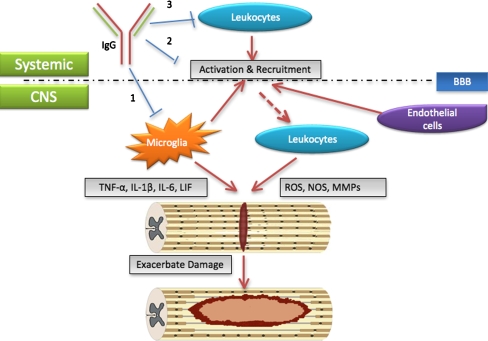Fig. 1.
Potential interactions of IgG with the neuroinflammatory response following SCI. Schematic diagram represents how the infiltration of microglia and leukocytes could exacerbate the initial damage. Microglia and leukocytes are recruited to the injury epicenter where they produce neurotoxic substances that cause neuronal and oligodendrocytic cell death in the secondary injury cascade. IgG has the potential to reduce the extent of secondary damage by interacting with microglia and leukocytes in the following mechanism: (1) inhibit microglia activation and reduce proinflammatory cytokine production, (2) inhibit leukocyte recruitment to the injury epicenter following SCI by acting on endothelial cells, and (3) inhibit leukocyte activation by upregulation of the inhibitory FcγIIB receptor. BBB blood-brain barrier, LIF leukemia inhibitory factor, ROS reactive oxygen species, NOS nitrous oxide synthase, MMPs matrix-metalloproteinases

